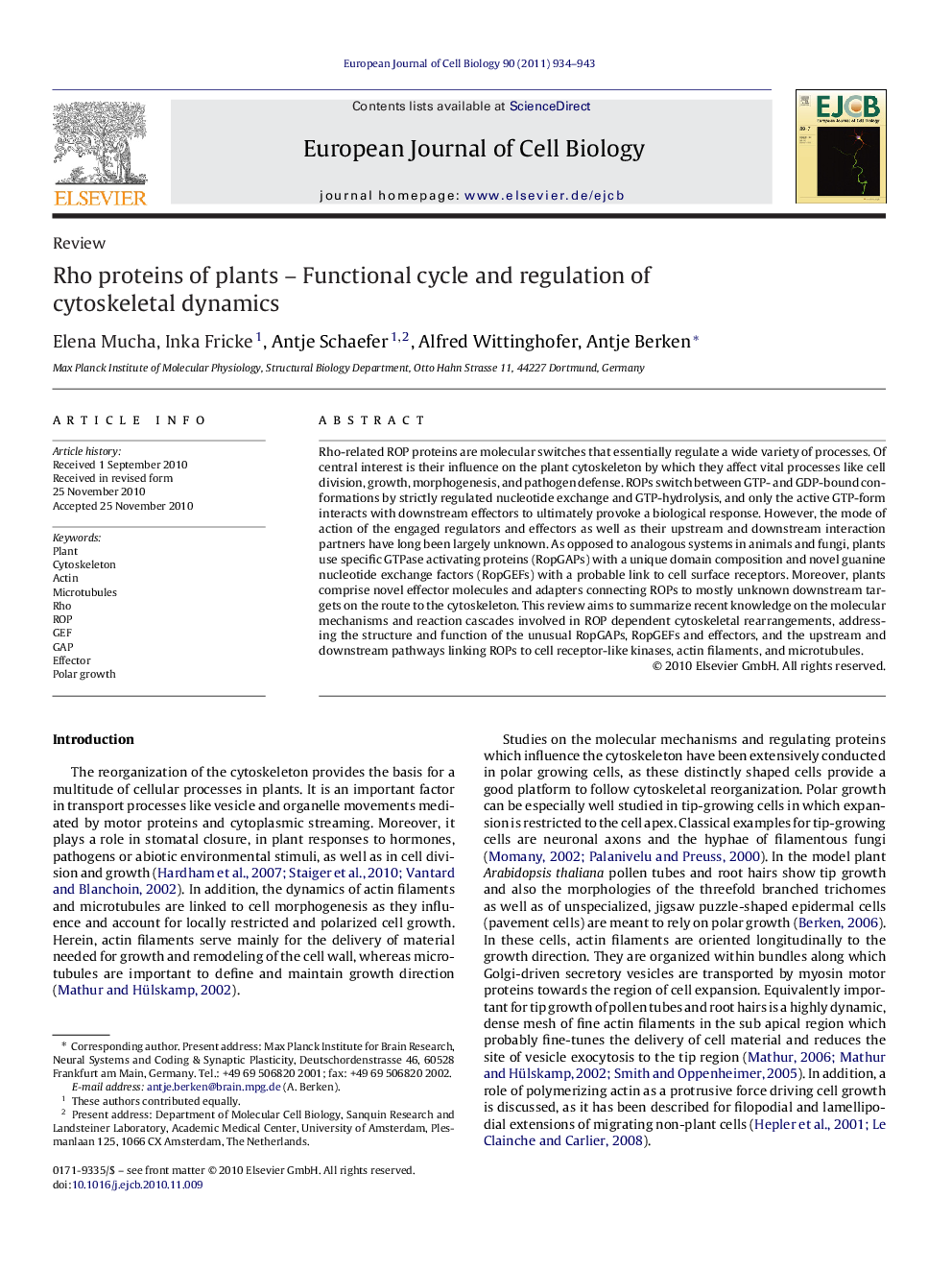| Article ID | Journal | Published Year | Pages | File Type |
|---|---|---|---|---|
| 2178615 | European Journal of Cell Biology | 2011 | 10 Pages |
Rho-related ROP proteins are molecular switches that essentially regulate a wide variety of processes. Of central interest is their influence on the plant cytoskeleton by which they affect vital processes like cell division, growth, morphogenesis, and pathogen defense. ROPs switch between GTP- and GDP-bound conformations by strictly regulated nucleotide exchange and GTP-hydrolysis, and only the active GTP-form interacts with downstream effectors to ultimately provoke a biological response. However, the mode of action of the engaged regulators and effectors as well as their upstream and downstream interaction partners have long been largely unknown. As opposed to analogous systems in animals and fungi, plants use specific GTPase activating proteins (RopGAPs) with a unique domain composition and novel guanine nucleotide exchange factors (RopGEFs) with a probable link to cell surface receptors. Moreover, plants comprise novel effector molecules and adapters connecting ROPs to mostly unknown downstream targets on the route to the cytoskeleton. This review aims to summarize recent knowledge on the molecular mechanisms and reaction cascades involved in ROP dependent cytoskeletal rearrangements, addressing the structure and function of the unusual RopGAPs, RopGEFs and effectors, and the upstream and downstream pathways linking ROPs to cell receptor-like kinases, actin filaments, and microtubules.
